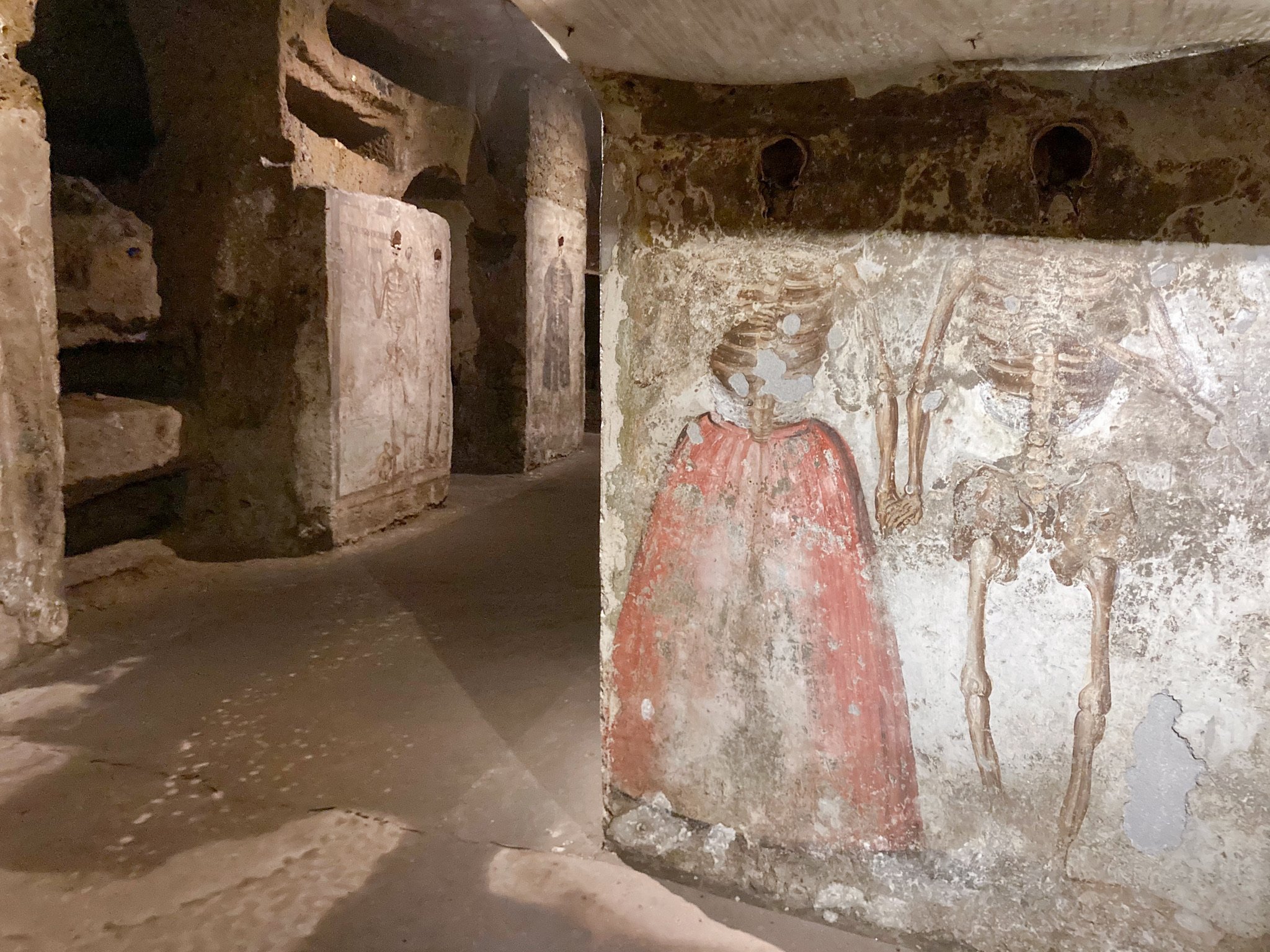Trigger warning: acknowledgement of death and descriptions of some gross stuff.
I love a cemetery. I love an underground network of rooms and passages, creepily lit and smelling of mildew. I love learning about how different people have chosen to honour, celebrate, and physically inter their dead. Literally everybody dies, and over the course of history people have dealt with death in such a fascinating myriad of ways.
The San Gaudioso Catacombs began in about 452 AD as the resting place of the saint, who was a bishop from Tunisia. Over the centuries the remains were removed by Rome, and finally returned to Napoli - but somewhere else. In the meantime, these catacombs were used to house the remains of other priests, bishops, as well as nobles and richies willing to pay to have their places in heaven more assured by being interred close to the holy men. In fact, the monks who took over the site used this money to build an elaborate and huge cathedral around the small (but still gorgeous) original one. This was done in order to protect the burial site and the holy men interred there, as well as provide the monks with a nice place to conduct their business.
Many nobles and their families were laid here, their bodies undergoing a bleeding and cleaning process that left mostly just bones to be laid in the dug out walls and rooms. There were frescoes painted to show who these people were in life - a famous painter, a swordsman, a magistrate, and - shown by the poofy dresses - women. These personal frescoes would be painted below a hole in the wall where the person’s actual skull would sit. Today there are just holes, which looks super weird, but imagine!
This is an amazing place to see, to feel. There are no bodies here anymore, all the bones have long since been removed. But the space powerfully brings to mind what it was created and used for. Death. The physics of dealing with the bodies. Grief, but also the hope of something more. And the desperate things we humans do to somehow assure ourselves of that.
It’s a pano, so a bit confusing to look at, but this shows the cathedral built above and around the smaller one you can see in the centre. It’s huge, with towering ceilings and chapels down the sides. The staircase leading to the organ surrounds and protects the smaller, much older church that sits above the catacombs.
The hole in the floor of the original church is where the bodies would be passed into the catacombs after the funeral. ‘Death Slaves’ would then process the body for burial. They did this by puncturing it multiple times to facilitate drainage, then breaking the longer bones so that they could be compacted into draining compartments dug into the walls. They placed jars underneath to collect most of the body fluids to be disposed of later, but of course it was a messy and very dangerous job due the risk/inevitability of disease. Death slaves didn’t last long, and so this job was given mainly to people already judged and condemned to death.





















